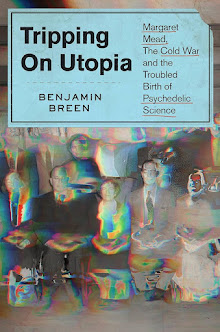The ports and creeks of ev'ry winding shore...
- Queen Dido in John Dryden's translation of The Aeneid, Bk. I
First in a series of once-weekly posts on my favorite vanished civilizations, I present THE CARTHAGINIAN EMPIRE. To understand Carthage, one has first to understand the Phoenicians, who were originally located in what is now Lebanon. The preeminent trading power of the ancient Near East and Mediterranean, the Phoenician city-states of Tyre, Sidon and Biblos (origin of the word 'Bible') sheltered a dynamic merchant community who regularly traveled from Mesopotamia in the East to Cadiz and Cornwall in the West. A Phoenician mariner, Hanno, even sailed as far as Senegal in West Africa, and Herodotus claims that Phoenicians in the employ of an eighth century Egyptian pharaoh successfully circumnavigated Africa, a feat that would not be repeated until the time of Vasco de Gama.
A Phoenician coin featuring a sea monster. c. 600 BC?
Cyrus the Great, Emperor of Persia, ultimately subdued the Phoenician city-states in 539 BC, with the final insult occurring when the supposedly unconquerable island city of Tyre was sacked by Alexander the Great in 332 BC. (Alexander achieved this feat by creating an artificial causeway linking Tyre to the mainland, creating an isthmus that lasts to this day).
A beautiful Phoenician/Carthaginian sculpture, c. 5th century BC.
The city of Carthage was founded by a mythical ruler known as Pygmalion in the 9th century BC, but it wasn't until these defeats that large numbers of Phoenicians appear to have emigrated to North Africa. The result was a rapid expansion of Carthaginian/Phoenician power into what was effectively a political vacuum in the coastal lands of the Western Mediterranean. Recent genetic testing has shown that one in seventeen inhabitants of southern Europe and North Africa may be directly descended from Phoenician forebears, including up to one half of the population of the island of Malta and a large percentage of Sardinians.
By the third century BC, Carthaginian dominance in the Western Mediterranean was being challenged by an aggressive new power, the Roman Republic. This is by far the best-known period of Carthaginian history, so I'll skip over it here. (For a good overview of the subject see Nigel Bagnall's The Punic Wars.)
Suffice to say, the Carthaginians ultimately lost, and their cities and provinces were devastated by the Romans. Few civilizations have been more thoroughly eradicated. The Roman conquest was so effective that almost everything we know about the Carthaginians today derives from (heavily biased) Roman sources. For instance, it was (and to a degree still is) commonly believed that Carthaginians practiced child sacrifice to the god Ba'al and the goddess Tanit -- a legacy of Roman propaganda that has continued to circulate for over two thousand years.
Fourth century BC Carthaginian coin featuring the goddess Tanit.
As an historian I'm doubtful about these claims because I'm familiar with the degree to which the victor rewrites history, but some archeologists do take them seriously. According to the archeologist Shelby Brown
| “ | the lady Tanit... The hands of the statue extended over a brazier into which the child fell once the flames had caused the limbs to contract and its mouth to open... The child was alive and conscious when burned... Philo specified that the sacrificed child was best-loved. |
The fact that we need to appeal to conflicting archeological evidence to reconstruct Carthaginian society points to the degree to which the Romans eradicated Carthaginian literary sources, of which only a handful survive. The survival of even a single Carthaginian library would immeasurably enrich our understanding of ancient history.
Tanit was the preeminent Carthaginian deity, the goddess of motherhood and the moon. Her symbol, above, is probably the most common surviving visual legacy from ancient Carthage, a testimony to a vanished religion and civilization which will probably never be fully understood.
Owing to the paucity of sources, books on Carthage are scarce. Adrian Goldsworthy's The Fall of Carthage: The Punic Wars, deals mainly with military matters. The best bet for a general overview may be Serge Lancel's Carthage: A History








1 comment:
The myth of the founding of Carthage credits Dido/Elissa as the founder, not her uncle Pygmalion who ruled Tyre.
Post a Comment